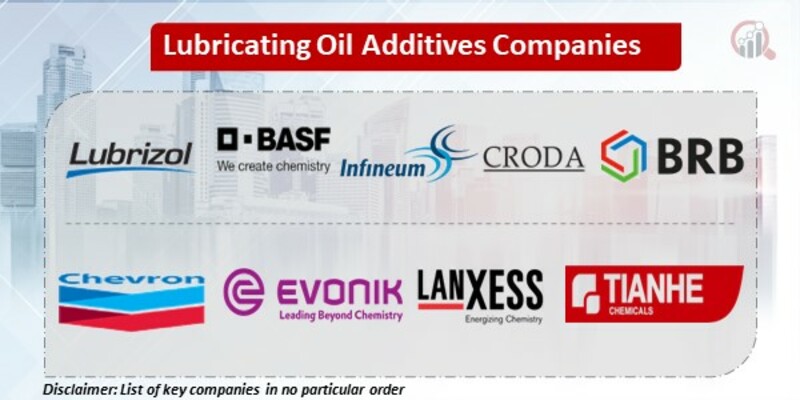Top Industry Leaders in the Lubricating Oil Additives Market
 In the bustling engine of the machinery world, a silent orchestra of chemical heroes conducts the performance – lubricating oil additives. These microscopic maestros enhance performance, protect components, and extend the life of engines across industries. Navigating this dynamic market requires delving into the strategies employed by key players, the factors influencing market share, the hum of recent developments, and the overall pulse of this critical field. So, prepare to embark on a 1000-word exploration where lubricating oil additives reign supreme.
In the bustling engine of the machinery world, a silent orchestra of chemical heroes conducts the performance – lubricating oil additives. These microscopic maestros enhance performance, protect components, and extend the life of engines across industries. Navigating this dynamic market requires delving into the strategies employed by key players, the factors influencing market share, the hum of recent developments, and the overall pulse of this critical field. So, prepare to embark on a 1000-word exploration where lubricating oil additives reign supreme.
Strategies Fueling Market Share:
-
Product Diversification: Leading players like Infineum, Lubrizol, and Afton Chemical are expanding beyond traditional performance enhancers (friction modifiers, viscosity improvers) to cater to niche applications. This includes environmentally friendly additives, fuel efficiency boosters, and wear mitigation solutions, ensuring a foothold in lucrative segments.
-
Geographical Expansion: Asia-Pacific, with its booming automotive and industrial sectors, is a magnet for market expansion. Companies are establishing local production facilities, forging regional partnerships, and tailoring product offerings to specific engine types and environmental conditions, solidifying their presence in this high-growth zone.
-
Innovation Pipeline: Continuous research and development are crucial for staying ahead. Companies like ExxonMobil and Chevron are investing heavily in advanced materials science, nanotechnology, and green chemistry, aiming to create even more efficient, durable, and sustainable additives.
-
Vertical Integration Vortex: Some players are integrating upstream (raw materials) and downstream (finished lubricant manufacturing) activities. This enhances control over supply chains, optimizes costs, and provides a competitive edge by offering complete solutions.
-
M&A Mergers: Mergers and acquisitions play a role in market consolidation. For instance, the merger of Infineum and Chevron Oronite in 2020 strengthened their combined position in the global lubricating oil additives market.
Factors Shaping the Market's Gears:
-
Demand Drivers: The increasing number of vehicles on the road, coupled with the trend towards longer oil drain intervals, fuels the demand for high-performance additives. Additionally, the expansion of heavy-duty machinery and industrial applications further drives market growth.
-
Regulatory Roadblocks: Stringent environmental regulations, particularly in Europe and North America, are pushing for low-VOC (volatile organic compound) and bio-based additives. This presents both challenges and opportunities for innovation.
-
Price Pressures: Fluctuations in raw material prices (base oils, chemical precursors) due to energy costs and geopolitical factors can impact production costs and profitability for market players.
-
Substitute Threats: While lubricating oil additives boast unique properties, competition from alternative lubrication technologies like solid lubricants and self-healing materials can impact market share in specific applications.
Key Companies in the Lubricating Oil Additives market include
- Lubrizol Corporation
- BASF
- Infineum International Limited
- Tianhe Chemicals
- Chevron Oronite Company
- Afton Chemical
- Evonik Industries
- Croda International
- BRB International
- Lanxess
- Krystal Lubetech Private Limited
Recent Developments:
-
July 2023: A consortium of industry players and environmental organizations launch a collaborative initiative to develop and implement recycling systems for used lubricants and additives, promoting a circular economy in the industry.
-
June 2023: The first commercial application of lubricating oil additives in 3D-printed engine components is announced, opening up new avenues for customized lubrication solutions.
-
May 2023: Researchers successfully synthesize a new class of high-temperature lubricants inspired by volcanic ash, potentially leading to improved performance and efficiency in extreme conditions.





 In the bustling engine of the machinery world, a silent orchestra of chemical heroes conducts the performance – lubricating oil additives. These microscopic maestros enhance performance, protect components, and extend the life of engines across industries. Navigating this dynamic market requires delving into the strategies employed by key players, the factors influencing market share, the hum of recent developments, and the overall pulse of this critical field. So, prepare to embark on a 1000-word exploration where lubricating oil additives reign supreme.
In the bustling engine of the machinery world, a silent orchestra of chemical heroes conducts the performance – lubricating oil additives. These microscopic maestros enhance performance, protect components, and extend the life of engines across industries. Navigating this dynamic market requires delving into the strategies employed by key players, the factors influencing market share, the hum of recent developments, and the overall pulse of this critical field. So, prepare to embark on a 1000-word exploration where lubricating oil additives reign supreme.





